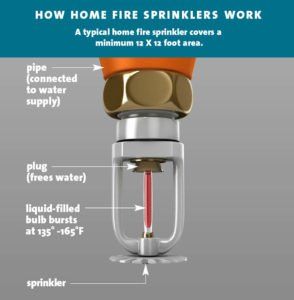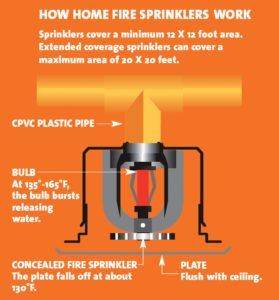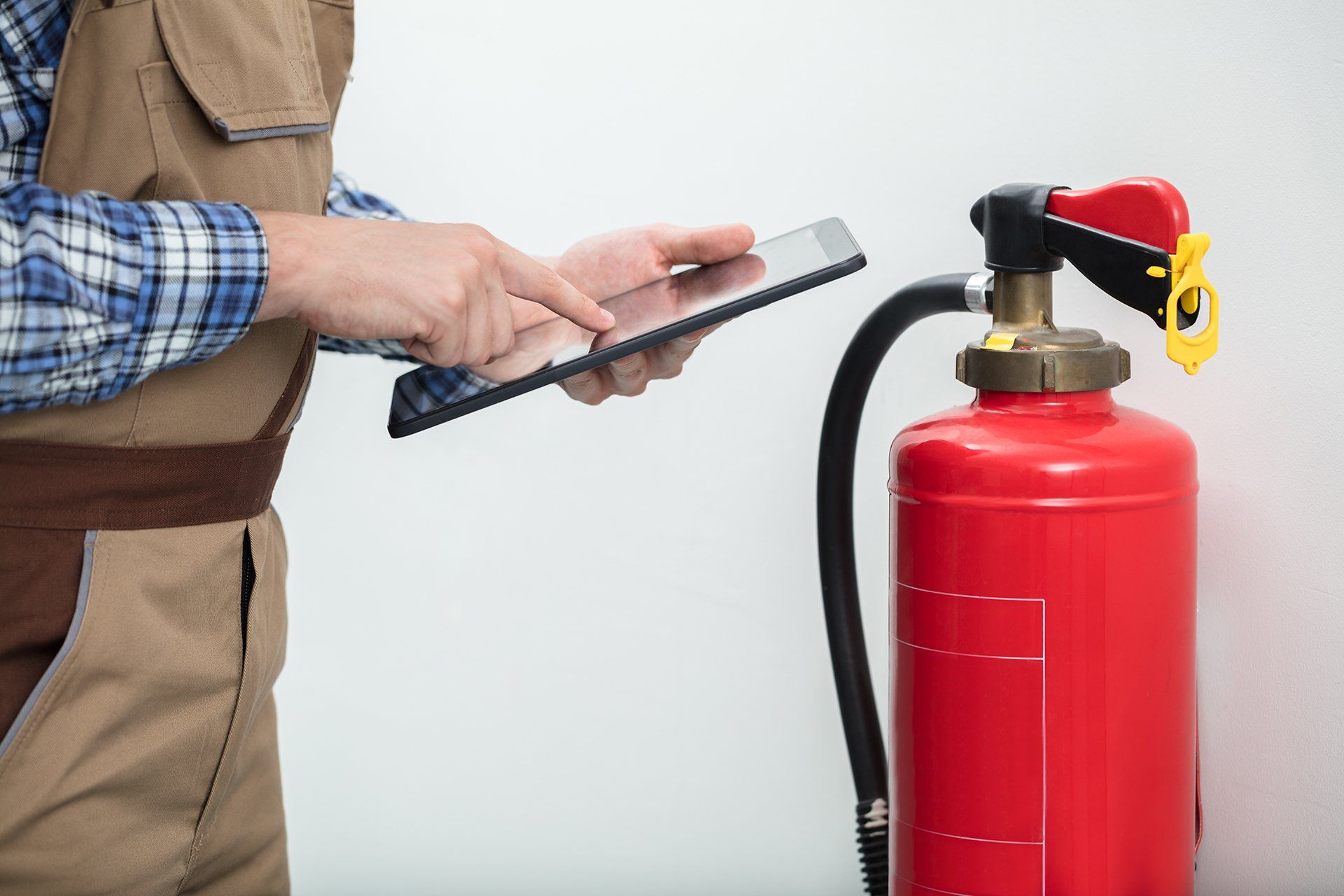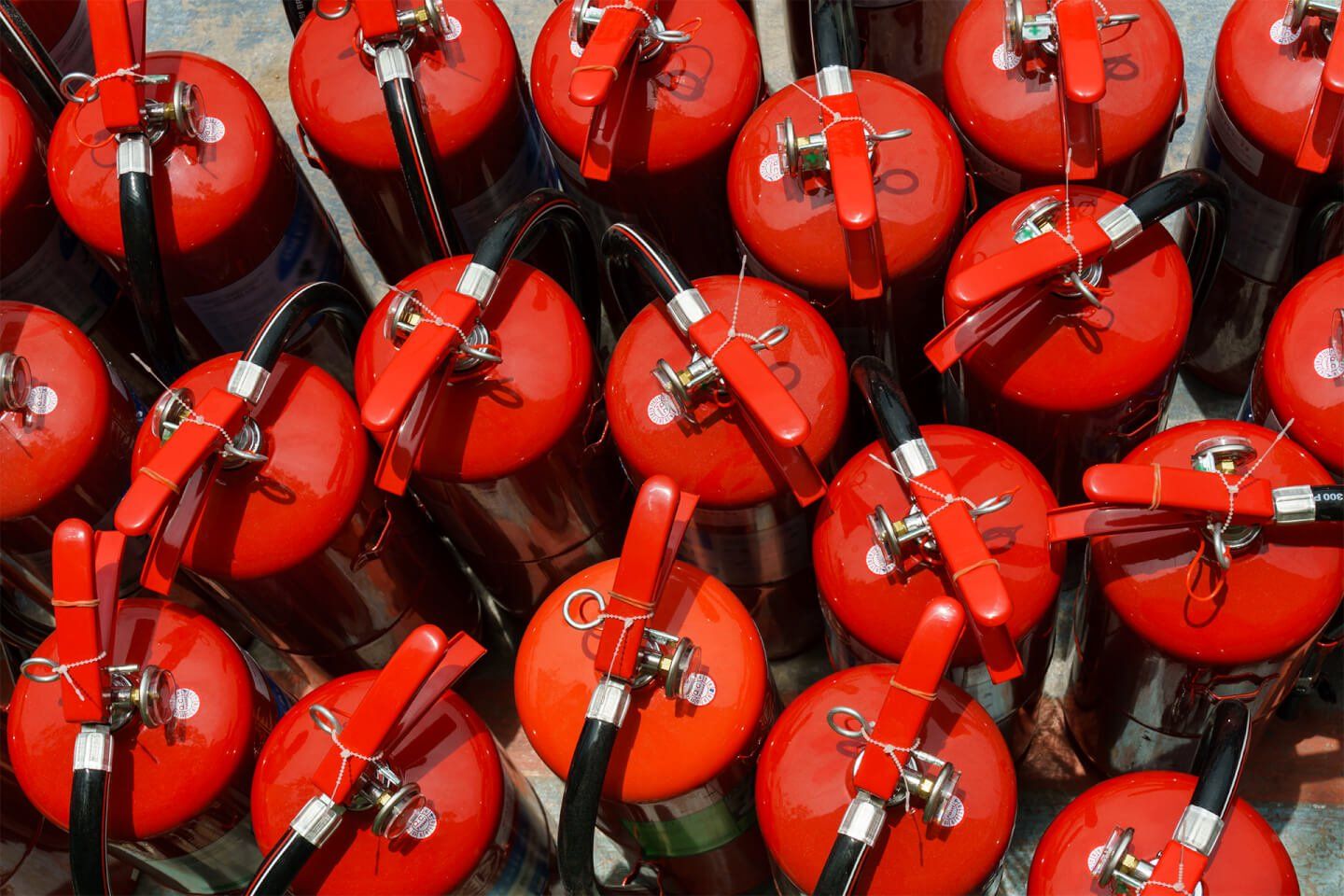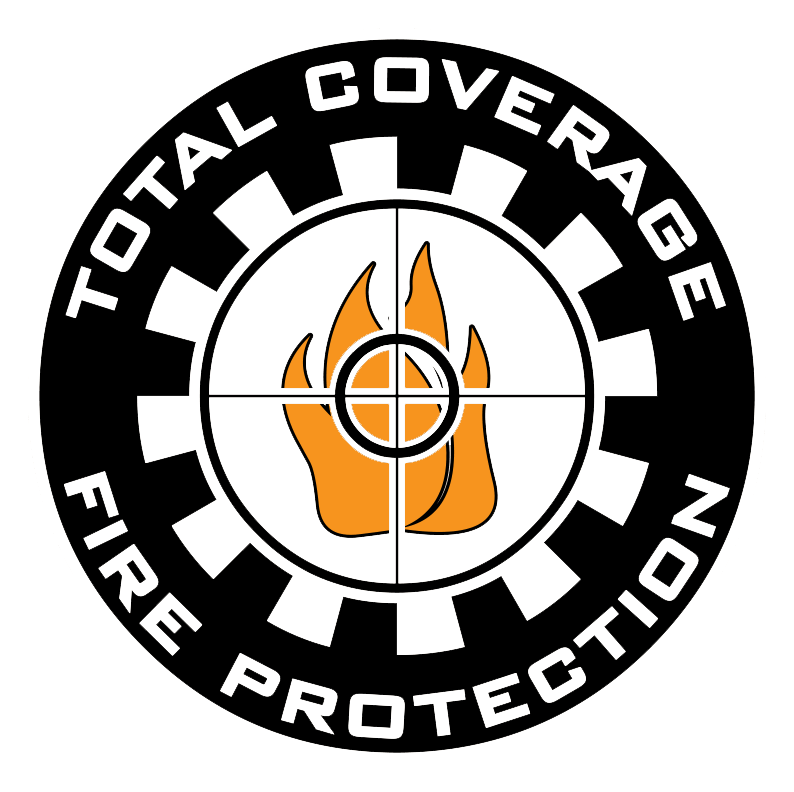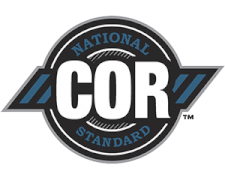Myth #7: Debunking Misunderstandings on How Sprinklers Work
We’re continuing our series on Home Sprinkler Systems, covering myths that surround home sprinkler systems – and the facts you need to know to stay safe:
Contrary to what many people think, we are not at greatest risk from fire in hotels or other public places; it is at home, where most of us feel the safest, that we are actually at highest risk of fire. Hotels, in fact, are among the places that are safest from fire, and that is due in large part to the fire protection technology required for them. That technology typically includes automatic fire sprinklers.
So how do Home Sprinkler Systems Work?
Home fire sprinklers include a network of piping filled with water under pressure that are installed behind the walls and ceilings, and individual sprinklers are placed along the piping to protect the areas beneath them. Because the water is always in the piping, fire sprinklers are always “on call”. If fire breaks out, the air temperature above the fire rises and the sprinkler activates when the air temperature gets high enough. The sprinkler sprays water forcefully over the flames, extinguishing them completely in most cases, or at least controlling the heat and limiting the development of toxic smoke until the fire department arrives. Only the sprinkler nearest the fire activates. Smoke will not activate sprinklers.
Sprinklers are so effective because they react so quickly. They reduce the risk of death or injury from a fire because they dramatically reduce the heat, flames, and smoke produced, allowing people the time to evacuate the home. Home fire sprinklers release approximately 10-25 gallons of water per minute. In a home without sprinklers, a fire is likely to grow to dangerous levels by the time the fire department is able to arrive.
In less time than it typically takes the fire department to arrive on the scene, sprinklers contain and even extinguish a home fire. That not only reduces property damage, it saves lives.
Total Coverage Fire Protection Offers Sprinkler Systems for Commercial and Residential Clients
How are they Installed?
Sprinklers are installed by specially trained contractors who follow NFPA codes and standards and other local requirements. The best time to install sprinklers is when you are building a new home or remodeling an existing home. Nationally, installing sprinklers adds between one and one-and-a-half percent to the total cost of construction. Installing sprinklers during remodeling, known as “retrofitting,” generally costs more and the cost depends on the existing structure. Many insurance companies offer a range of discounts for homeowners with sprinklers, making comparison shopping worthwhile.New Paragraph
Debunking the Myths
Unfortunately, there are many stubborn misconceptions about home fire sprinklers that make some homeowners reluctant to install sprinklers in their homes. These are the facts:
It is extremely rare for sprinklers to operate accidentally. In a typical home, water damage will be considerably less from unwanted sprinkler discharges than from other plumbing mishaps.
Cigar smoke and burned toast cannot cause a sprinkler to operate. Only the high temperature that results from a fire will activate the sprinkler.
All the sprinklers do not activate at once. This scenario may be common in movies and TV shows, but it just isn’t true for home fire sprinklers. Only the sprinkler closest to the fire activates. Ninety percent of the time, one sprinkler contains the fire.
Check out some more myths around home sprinkler systems in our archive.
Home fire sprinklers give you added protection from fire and peace of mind. NFPA encourages the use of these devices. Ask your builder about installing sprinklers in your home. Free information for both builders and homeowners is available by contacting the nonprofit Home Fire Sprinkler Coalition.
This article was taken from nfpa.org. Check out their website for more helpful information!
If you’re considering building a new home, get a free quote for a home sprinkler system and make sure you and your family and as protected as can be. Total Coverage Fire Protection offers commercial and residential sprinkler installation.
You might also like
The Fire Protection Blog
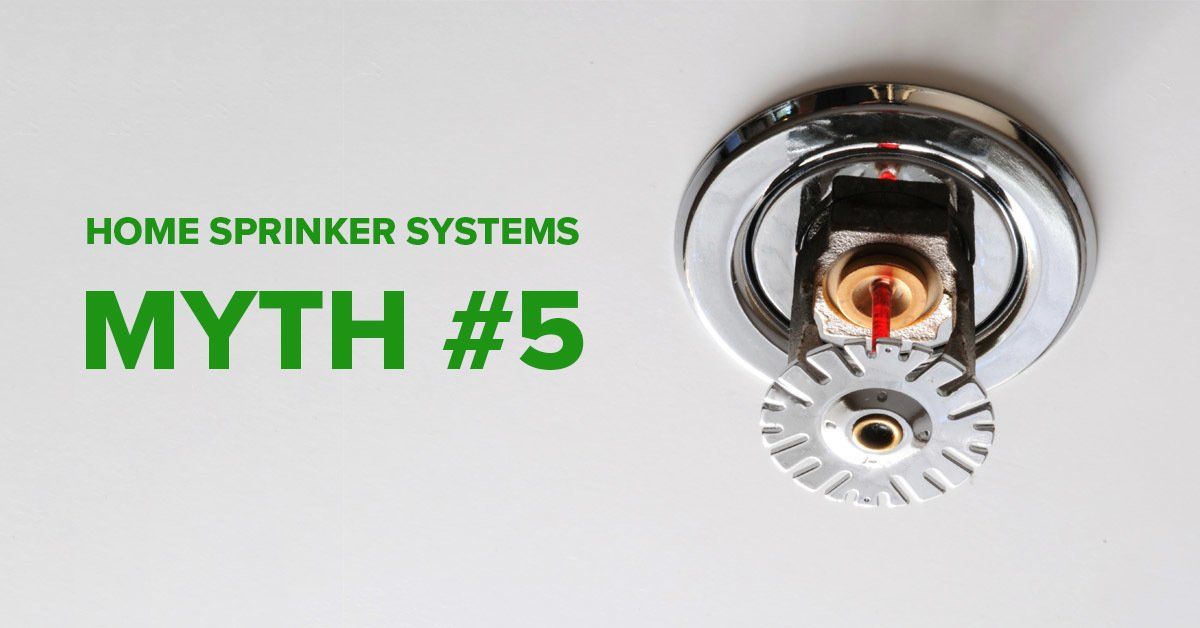
FACT: The standard design for home fire sprinklers is much simpler than the design for more traditional sprinklers like the ones used in commercial buildings. If you install home fire sprinklers, the only “inspection and maintenance” you will need is to (a) walk around your home and make sure the sprinklers are not obstructed by something that would block the water coming out, and (b) avoid turning off the main control valve, which you don’t normally operate anyway.
